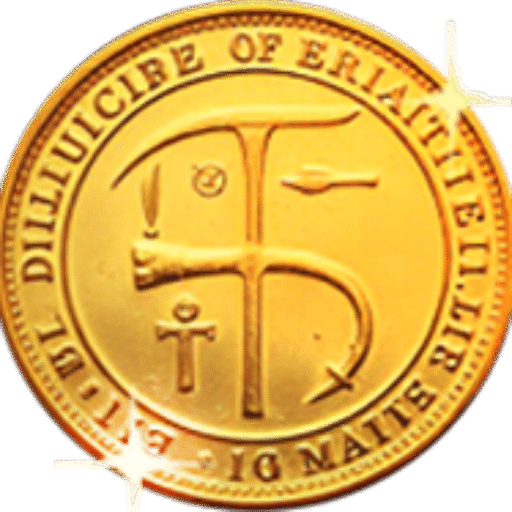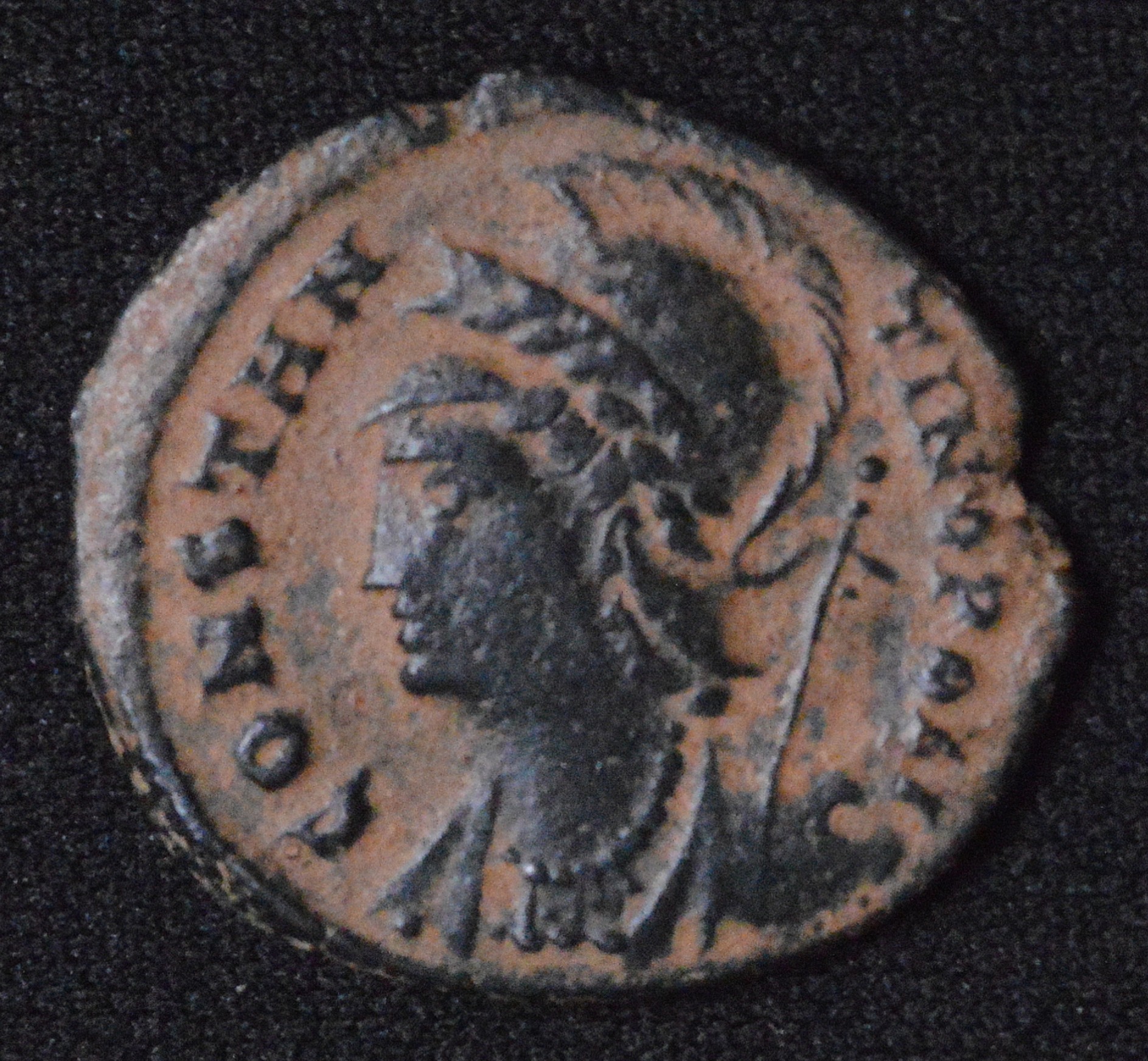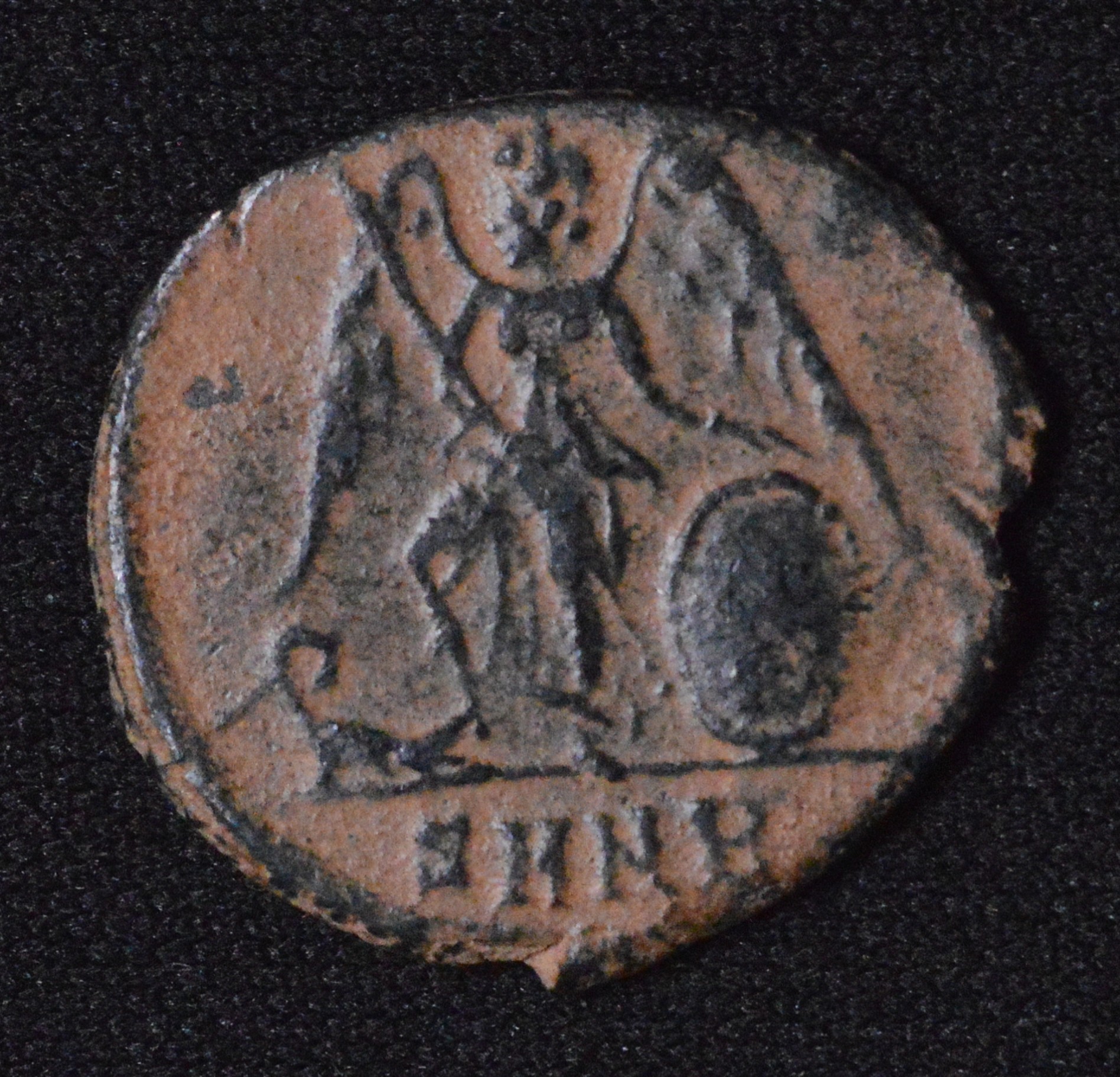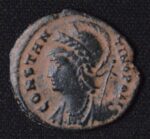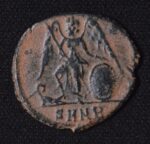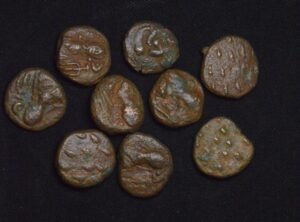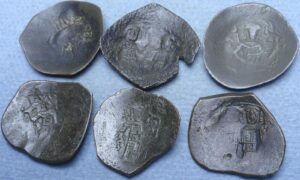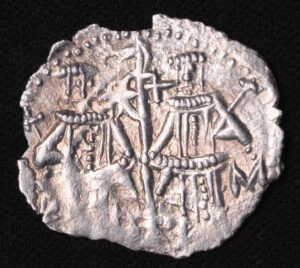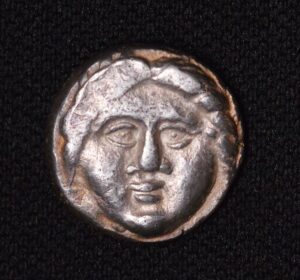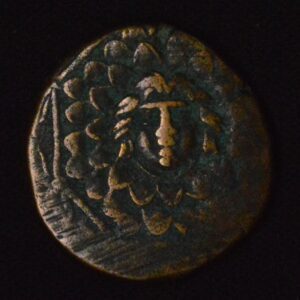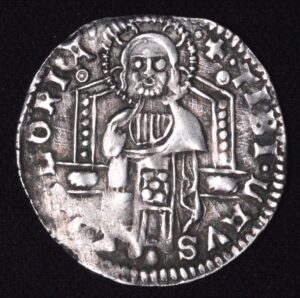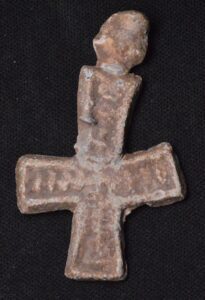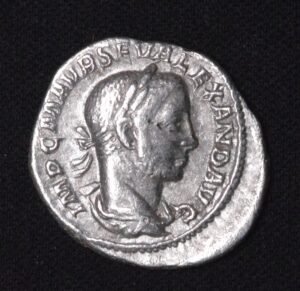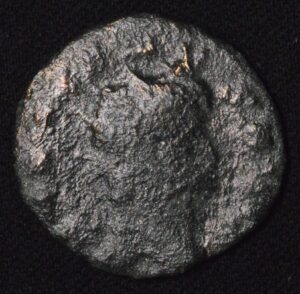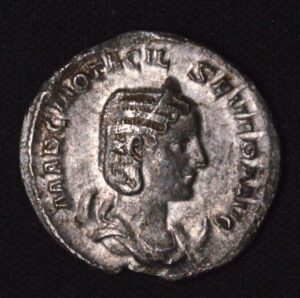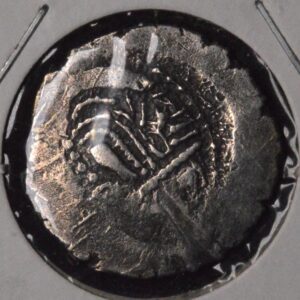Description
The Ancient Rome Constantine the Great coin is a significant numismatic piece from the reign of one of Rome’s most transformative emperors, Constantine I, who ruled from AD 306 to 337. This bronze coin was issued during a pivotal time when Constantine shifted the Roman Empire toward Christianity and founded the new capital, Constantinople, marking a historic era of religious and political change.
Typically, the obverse of Constantine’s coin features a detailed portrait of the emperor facing right. Earlier issues present him with a laurel wreath, while later coins often depict him wearing a pearl diadem or rosette crown, reflecting his growing imperial pomp. The inscriptions surrounding the portrait usually display his full imperial titles, emphasizing his authority and divine right to rule.
On the reverse, designs vary and include symbolic imagery such as military emblems, city gates representing Constantinople, or Christian symbols like the Chi-Rho (☧), one of the earliest numismatic representations of Christianity. These reverses convey the emperor’s power and the empire’s ideological shift during his long reign.
Made from bronze alloy, these coins were widely circulated and intended for everyday transactions, making them accessible relics of a monumental period in history. Collectors value their historical importance, artistic merit, and the transition they represent from pagan Roman traditions to Christian imperial rule.
Owning a Constantine the Great coin offers a tangible connection to a pivotal epoch that shaped Western civilization. Its artistry and symbolism, combined with its ancient origin, make it a prized addition to collections focused on Roman emperors, early Christianity, or the evolution of imperial coinage.
The Ancient Rome Constantine the Great coin is a significant numismatic piece from the reign of one of Rome’s most transformative emperors, Constantine I, who ruled from AD 306 to 337. This bronze coin was issued during a pivotal time when Constantine shifted the Roman Empire toward Christianity and founded the new capital, Constantinople, marking a historic era of religious and political change.
Typically, the obverse of Constantine’s coin features a detailed portrait of the emperor facing right. Earlier issues present him with a laurel wreath, while later coins often depict him wearing a pearl diadem or rosette crown, reflecting his growing imperial pomp. The inscriptions surrounding the portrait usually display his full imperial titles, emphasizing his authority and divine right to rule.
On the reverse, designs vary and include symbolic imagery such as military emblems, city gates representing Constantinople, or Christian symbols like the Chi-Rho (☧), one of the earliest numismatic representations of Christianity. These reverses convey the emperor’s power and the empire’s ideological shift during his long reign.
Made from bronze alloy, these coins were widely circulated and intended for everyday transactions, making them accessible relics of a monumental period in history. Collectors value their historical importance, artistic merit, and the transition they represent from pagan Roman traditions to Christian imperial rule.
Owning a Constantine the Great coin offers a tangible connection to a pivotal epoch that shaped Western civilization. Its artistry and symbolism, combined with its ancient origin, make it a prized addition to collections focused on Roman emperors, early Christianity, or the evolution of imperial coinage.
The Ancient Rome Constantine the Great coin is a significant numismatic piece from the reign of one of Rome’s most transformative emperors, Constantine I, who ruled from AD 306 to 337. This bronze coin was issued during a pivotal time when Constantine shifted the Roman Empire toward Christianity and founded the new capital, Constantinople, marking a historic era of religious and political change.
Typically, the obverse of Constantine’s coin features a detailed portrait of the emperor facing right. Earlier issues present him with a laurel wreath, while later coins often depict him wearing a pearl diadem or rosette crown, reflecting his growing imperial pomp. The inscriptions surrounding the portrait usually display his full imperial titles, emphasizing his authority and divine right to rule.
On the reverse, designs vary and include symbolic imagery such as military emblems, city gates representing Constantinople, or Christian symbols like the Chi-Rho (☧), one of the earliest numismatic representations of Christianity. These reverses convey the emperor’s power and the empire’s ideological shift during his long reign.
Made from bronze alloy, these coins were widely circulated and intended for everyday transactions, making them accessible relics of a monumental period in history. Collectors value their historical importance, artistic merit, and the transition they represent from pagan Roman traditions to Christian imperial rule.
Owning a Constantine the Great coin offers a tangible connection to a pivotal epoch that shaped Western civilization. Its artistry and symbolism, combined with its ancient origin, make it a prized addition to collections focused on Roman emperors, early Christianity, or the evolution of imperial coinage.
CUSTOMER FEEDBACK








Related Products & Newly Released!
-
$30.00
-
$300.00
-
$110.00
-
$69.00




SHIPPING POLICY
Your order is shipped from the United States with USPS tracking within one business day.
14 Day Return Policy
You can return your item back within
14 days of the purchase

Secure payments
Your payments are 100% secure and are processed through Square or PayPal on a protected security network.
SHIPPING POLICY
FREE International and Domestic (United States) shipping. Your order is shipped with USPS tracking 24 hours after you order.
14 Day Return Policy
You can return your item back within
14 days of the purchase

Secure payments
Your payments are 100% secure and are processed through Square or PayPal on a protected security network.
RESOURCES
support
Get Fresh Articles!
Sign up now to receive our articles for the latest insights and promotions!
RESOURCES
support
Get Fresh Articles!
Signup our newsletter to get update insight or promotions.

